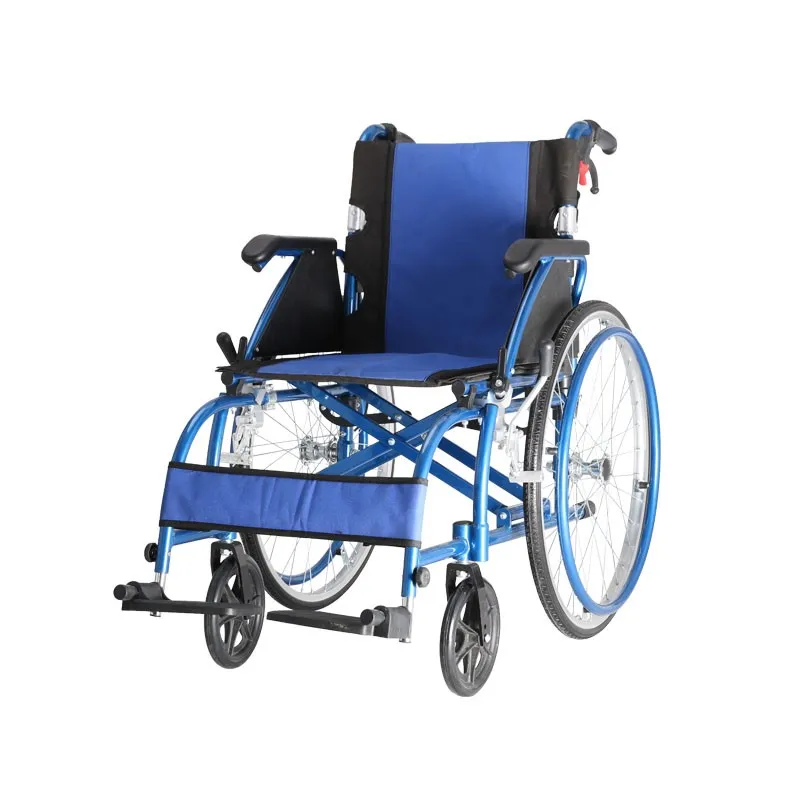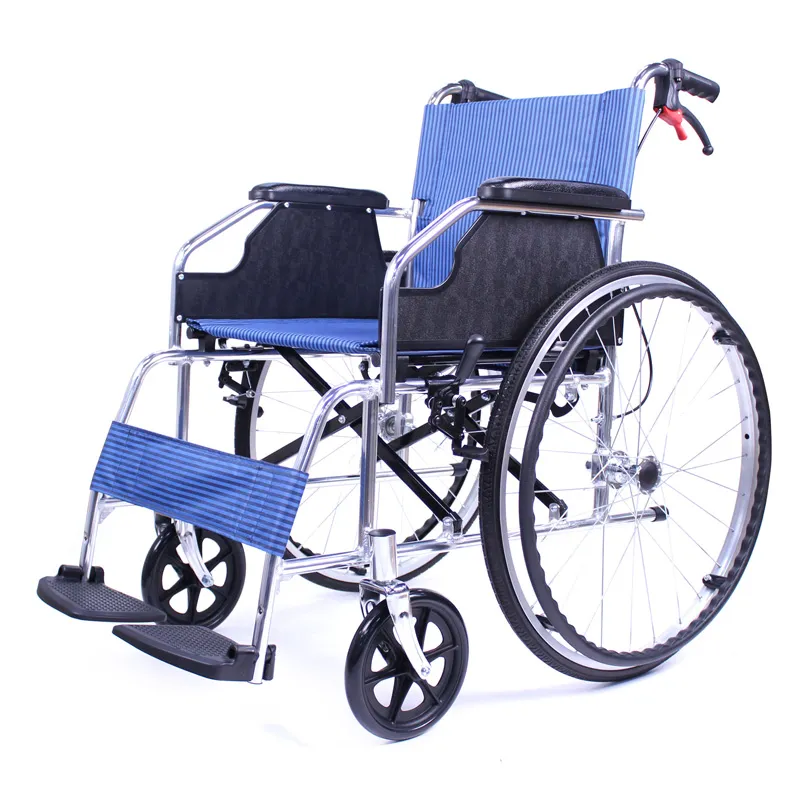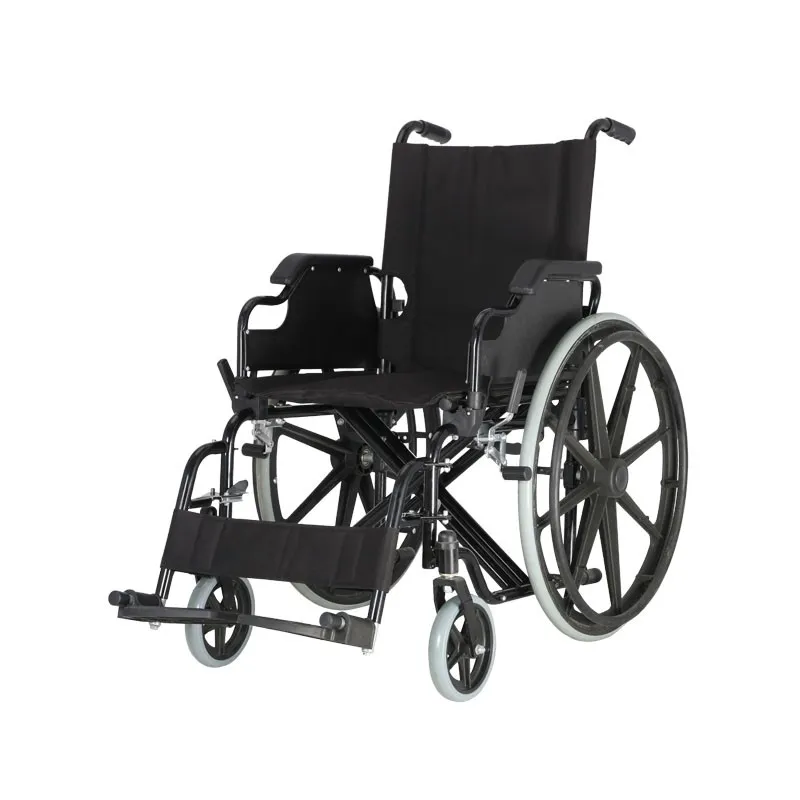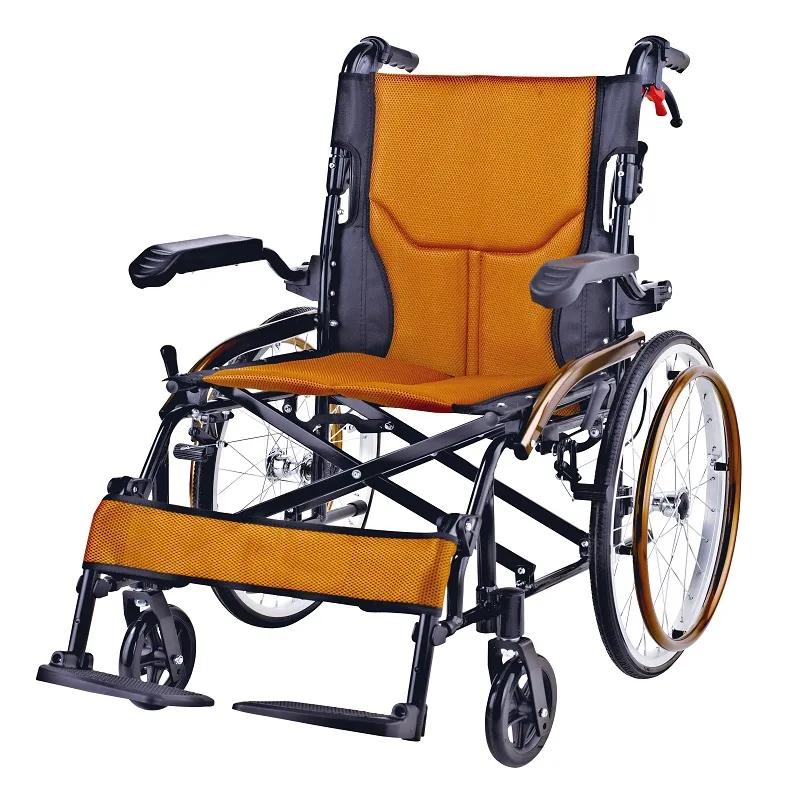Manual wheelchairs are among the most common mobility aids for people with disabilities, post-operative recoveries, and the elderly. Their popularity stems from their simple structure, relatively low price, and ability to operate without electricity.
As the user base becomes increasingly diverse, a long-overlooked but crucial question is emerging: "Are there weight restrictions for manual wheelchairs?"
This is not merely a discussion of technical parameters, but a systemic issue concerning safety, ergonomic fit, wheelchair lifespan, and user health risks. Many consumers focus solely on price, appearance, and folding mechanism when purchasing manual wheelchairs, often neglecting the vital dimension of "weight compatibility."
This article will address the core question of "Are there weight restrictions for manual wheelchairs?" and analyze the differences and usage boundaries between "lightweight manual wheelchairs" and "heavyweight manual wheelchairs."

Why are there weight restrictions for manual wheelchairs?
1. Safe load-bearing is the primary principle
As a device that supports the user's weight and daily mobility, the structural stability and load-bearing capacity of a manual wheelchair directly impact user safety. If a user's weight exceeds the wheelchair's design limits, the following problems may occur:
• Wheelchair frame deformation or breakage;
• Seat support structure sagging;
• Wheel bearing damage;
• Significantly reduced maneuverability (e.g., difficulty pushing, unstable steering);
• Increased risk of user falls or injuries.
Therefore, every manual wheelchair specifies its maximum load-bearing capacity at the factory and requires users to undergo a weight matching assessment before use.
2. Material and Structural Limitations on Design Strength
Manual wheelchairs are typically constructed from materials such as aluminum alloy, stainless steel, or carbon fiber. While these materials all possess good strength, each material has different maximum static and dynamic load capacities within a finite thickness. The welding process, axle diameter, and cross-bracing design of different wheelchair types directly affect load-bearing capacity.
In short, the load-bearing capacity of a wheelchair cannot be arbitrarily increased; it is a technical limit determined by structural engineering and materials mechanics.
Lightweight Manual Wheelchairs vs. Heavy-Duty Manual Wheelchairs: What is the difference?
Manual wheelchairs can be broadly categorized into two types based on their load-bearing capacity and structural weight:
1. Lightweight Manual Wheelchairs
2. Heavy-Duty Manual Wheelchairs
These two types are suited to different weights, usage intensities, and environmental needs.

Lightweight Manual Wheelchairs: Portable, But with Limited Load-Bearing Capacity
1. Characteristics of Lightweight Manual Wheelchairs
Lightweight manual wheelchairs are typically made of aluminum alloy or carbon fiber, resulting in a lightweight structure weighing between 8 and 13 kg, making them easy to carry, fold, and store. They are designed for daily mobility or short-term assistance and are widely used for:
· Short-distance outings for the elderly;
· Patients in the early stages of rehabilitation;
· Situations requiring assistance from caregivers.
2. Load-Bearing Standards for Lightweight Wheelchairs: Generally Not Exceeding 100 kg
According to mainstream brands and national standards, the load-bearing capacity of lightweight manual wheelchairs is generally controlled below 100 kg. This standard is a safety threshold value established by considering technical parameters such as materials, welded structure, and wheel axle load. • Users weighing over 100 kg may experience the following problems when using a lightweight manual wheelchair:
• Slight frame deformation, reducing overall stability;
• Sinking of the seat cushion in the middle, causing pelvic tilt;
• Exceptionally difficult to push, affecting efficiency;
• Loosening of bolts and joint dislocation may occur after prolonged use.
3. Not suitable for overweight individuals
The advantage of lightweight manual wheelchairs is their lightness and portability, but this also means they are not suitable for moderate to severe obesity or users weighing over 100 kg. Incorrect use will significantly increase the risk of damage and personal injury.
Heavy-Duty Manual Wheelchairs: High Load-Bearing Capacity, More Robust Structure
1. Features of heavy-duty manual wheelchairs
Heavy-duty manual wheelchairs, also known as "reinforced" wheelchairs, use thicker stainless steel tubing or high-strength aerospace-grade aluminum, combined with reinforced welding technology and a multi-bearing support system. Their overall weight is typically between 16 and 22 kg. They are mainly suitable for:
• Individuals with higher body weight;
• Individuals who sit in a wheelchair for extended periods;
• Users who need to perform frequent daily tasks.
2. Heavy-duty wheelchair load-bearing standard: Generally 120 kg
The standard load-bearing capacity of a heavy-duty manual wheelchair is generally around 120 kg. Some high-end models can even support 130-140 kg, but these are not standard models; they are customized reinforced products.
The standard 120 kg load-bearing capacity is based on structural mechanics testing, seat support force analysis, and long-term fatigue testing, providing a higher safety factor and suitable for most moderately obese or large-sized adults.
3. Enhanced configuration, higher maintenance requirements
Heavy-duty manual wheelchairs are equipped with thicker axles, thicker seat cushions, more stable braking systems, and pressure-resistant footrests, ensuring safe operation under high loads. However, this also means that their price and daily maintenance costs are relatively higher.

How to determine which manual wheelchair is right for you?
1. Measure your weight first, then choose a model
Weight is the most important parameter for determining wheelchair model selection. When choosing a wheelchair, you should first confirm your current weight and allow for a 10% margin of error for future growth. For example:
· If your current weight is 88 kg, a lightweight manual wheelchair with a weight capacity of 100 kg is recommended.
· If your current weight is 105 kg or your weight fluctuates, a heavy-duty manual wheelchair should be chosen directly.
2. Posture and Pressure Distribution are Also Crucial
Wheelchair selection is not only determined by weight, but also by body distribution: if weight is concentrated in the hips or thighs, it will place a higher load on the seat and front structure, so lightweight products should be used with caution.
Furthermore, for individuals with pelvic tilt or lumbar spine deformities, a more structurally stable heavy-duty manual wheelchair should be chosen to maintain correct posture.
What are the consequences of ignoring wheelchair weight restrictions?
Incorrect wheelchair selection not only leads to structural damage and financial loss, but may also cause the following health problems:
1. Pelvic Misalignment and Abnormal Spinal Stress
Using a lightweight manual wheelchair when overweight can cause the seat to sink, leaving the pelvis unsupported, leading to:
· Compensatory scoliosis;
· Obstructed blood flow to the lower limbs;
· Chronic lower back pain.
2. Increased Difficulty in Wheelchair Maneuvering
Excess weight significantly increases the rolling resistance of the wheelchair, requiring users or caregivers to exert more effort to push it, affecting daily use efficiency and increasing the risk of sports injuries.
3. Increased Risk of Structural Failure
Lightweight structures are more prone to:
· Seat cracks;
· Footrest breakage;
· Rear wheel wobble, front wheel imbalance, etc.
Sudden structural instability of the wheelchair may lead to falls, collisions, or even fractures.
Wheelchair Purchase Recommendations: Understand the Specifications, Don't Rely on Feelings
1. Consult the Instruction Manual or Technical Specifications
Qualified manual wheelchairs should indicate the maximum load capacity (e.g., Max load: 100kg). Consumers should prioritize checking this parameter when purchasing.
If there is no clear load capacity specification, it is not recommended to purchase.
2. Avoid the Misconception that "Lightweight" Equals "All-Round"
Many consumers value the lightweight nature of wheelchairs, especially family members who purchase them on behalf of others. It's important to understand one thing:
· Lightweight ≠ Suitable for everyone, especially not for users weighing over 100 kg.
· The biggest advantage of lightweight manual wheelchairs is portability, not high load-bearing capacity.
3. Never test your weight limits
Even if a user weighs 98 kg, it's not recommended to "force" them to use a lightweight wheelchair that only supports 100 kg. Considering clothing, food, water, and inertia, the actual load-bearing capacity is much higher than the static weight; a heavier-duty product with higher standards should be chosen.

Choose the Correct Wheelchair Type for Safety
"Are there weight restrictions for manual wheelchairs?" The answer is yes! Whether it's a lightweight manual wheelchair (generally supporting 100 kg) or a heavy-duty manual wheelchair (generally supporting 120 kg), it must be used within its load-bearing range to ensure safety, extend the wheelchair's lifespan, and protect the user's health.
Incorrect wheelchair type not only reduces the user experience but can also lead to structural failure and serious health consequences.
Every user, home caregiver, and healthcare worker should adopt a "matching to needs" mindset, avoiding using "lightweight" as the sole reference, and scientifically assessing the compatibility between the wheelchair's weight-bearing capacity and the individual's weight.
Does Dayang Medical offer OEM services for international buyers?
Yes, we provide full OEM and branding services for overseas customers. Many brands purchase from our factory and sell under their own labels. We can customize wheelchair colors, logos, packaging, and even technical features according to requirements. Our factory-direct sales model ensures clients receive competitive prices and wholesale supply.










